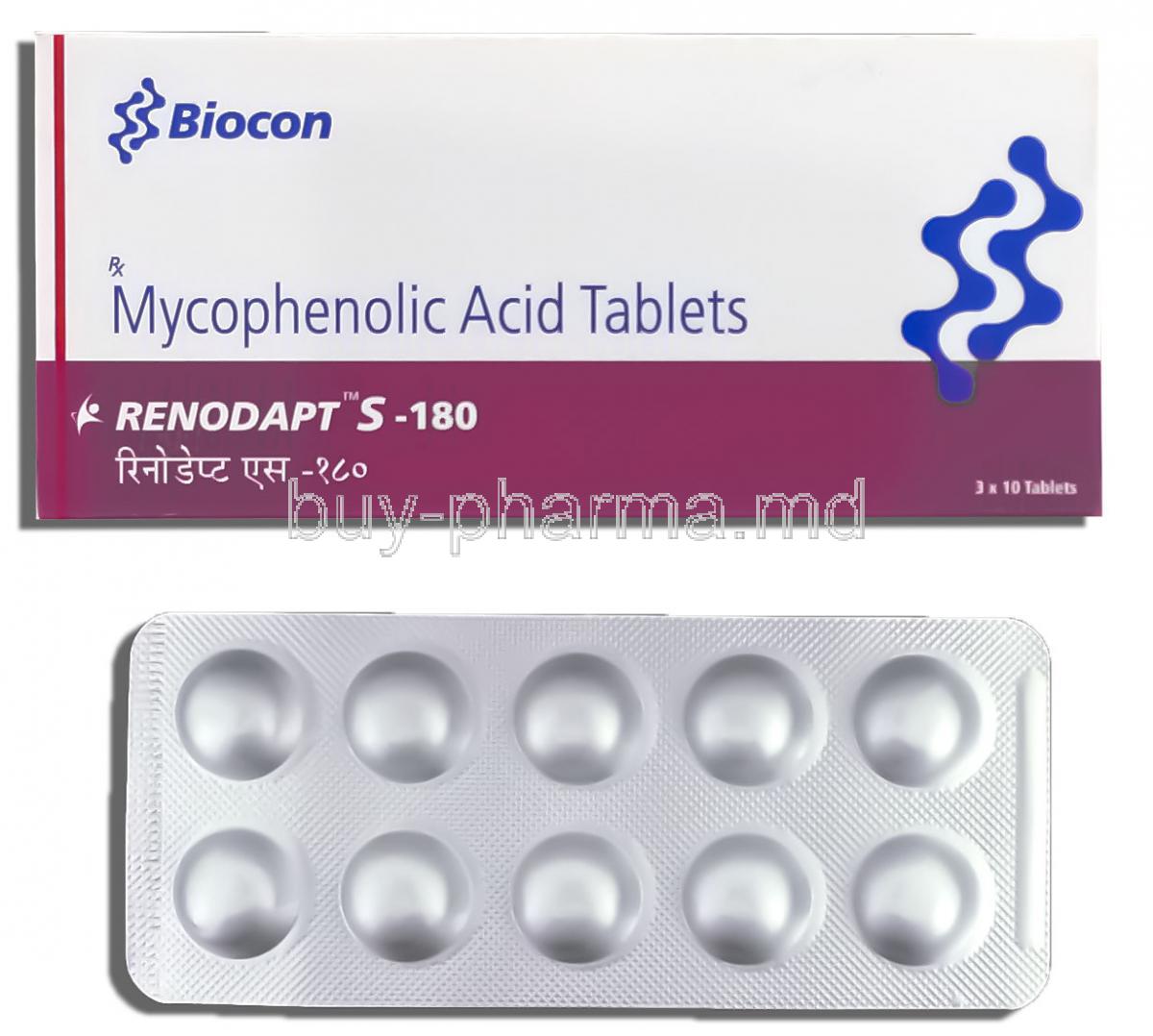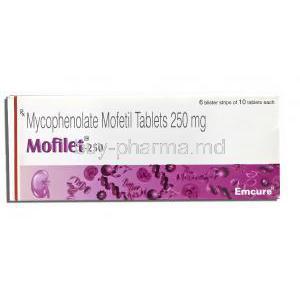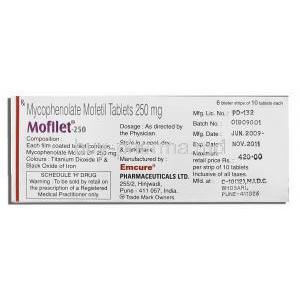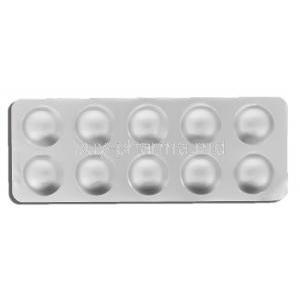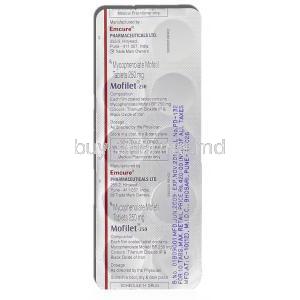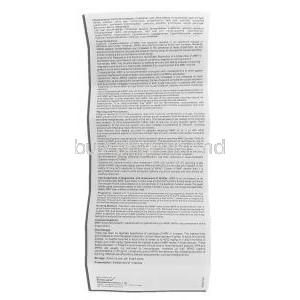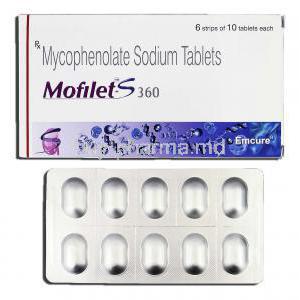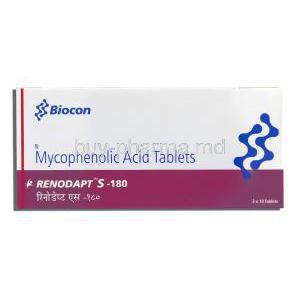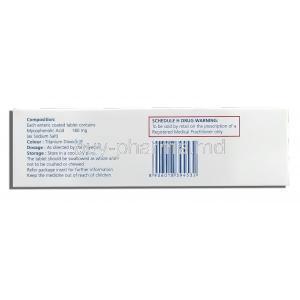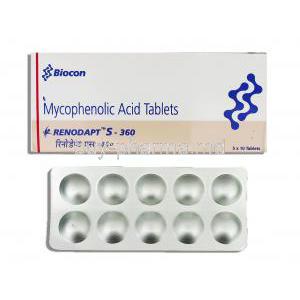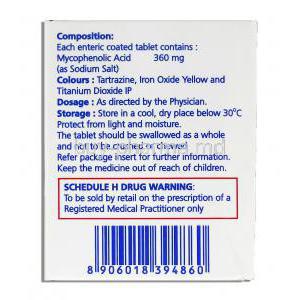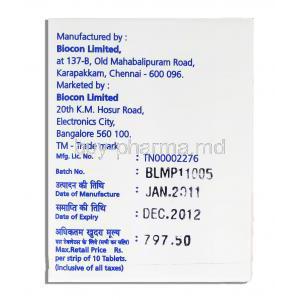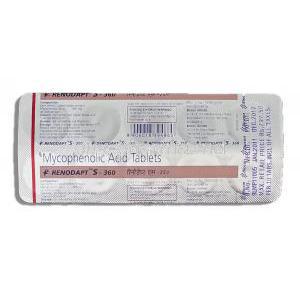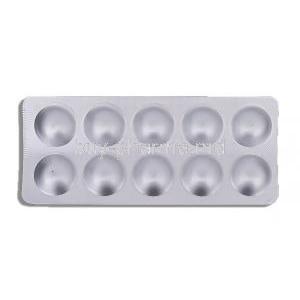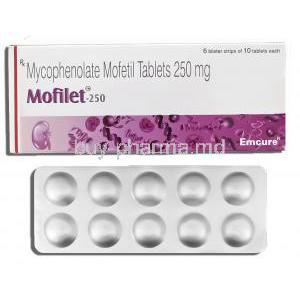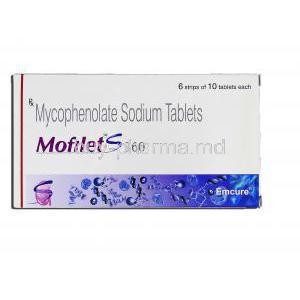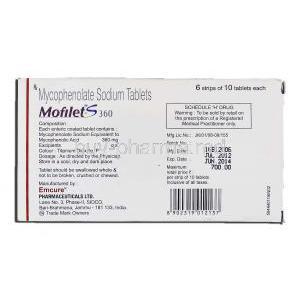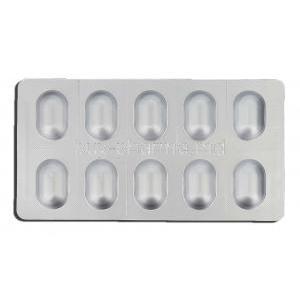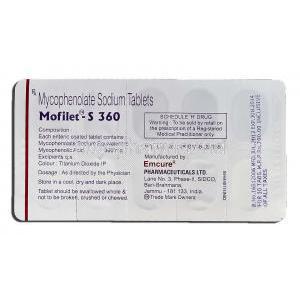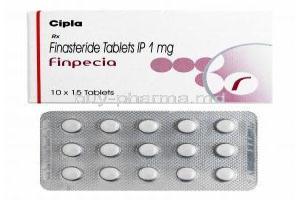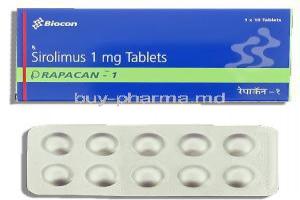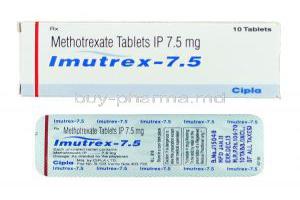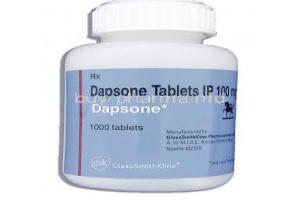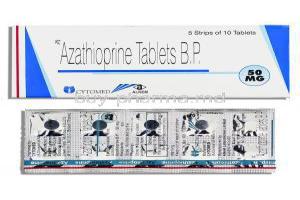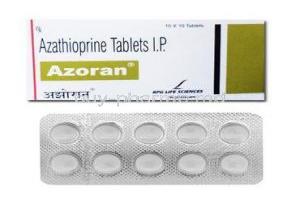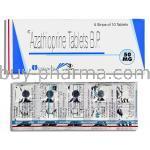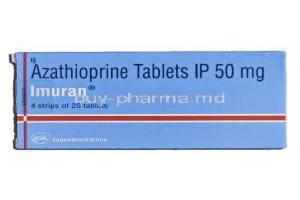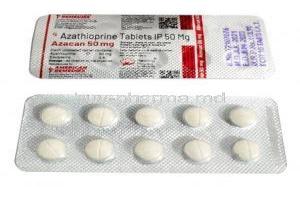Mycophenolic
- Introduction
- Uses of Mycophenolic
- Off-label Uses of Mycophenolic
- How Mycophenolic Works
- Dosage and Administration
- Composition
- Common Side Effects
- Severe Side Effects and Warning
- Interactions
- Contraindications
- Careful Administration and Important Precautions
- Administration to Specific Populations
- Overdosage
- Storage
- Handling Precautions
Introduction
Origin and discovery of Mycophenolic
The story of Mycophenolic commenced as an extract from mold with its roots dating back to the Penicillium stoloniferum. Initially found for its ability to fight bacteria, scientists later discovered its properties in suppressing the immune system. Mycophenolic is a compound that has evolved from an unknown mold extract to a crucial component in transplant medicines collection of drugs.
Role in modern medicine
Mycophenolic is an example of the incredible advancements in drug discovery that play a crucial role in organ transplantation within the current medical field. Furthermore, its effectiveness in treating disorders demonstrates its versatility. Given its range of therapeutic uses, Mycophenolic has undeniably established itself as an essential component of modern medicine.
Uses of Mycophenolic
Primary indications and FDA-approved uses
Mycophenolic acid (MPA) is an immunosuppressant that is used to prevent the rejection of transplanted organs 1. Studies have shown that MPA is effective in reducing the impacts of lupus nephritis, a kidney disease that is caused by systemic lupus erythematosus (SLE) 23. MPA has also been used to treat various autoimmune conditions by suppressing the immune system 4.
1: National Library of Medicine 2: American Journal of Kidney Diseases31170-9/fulltext) 3: MedlinePlus 4: Cleveland Clinic
Benefits in organ transplantation
The incredible effectiveness of Mycophenolic is evident in the field of organ transplantation. It reduces the body's immune response to the newly transplanted organ, preventing rejection. This ultimately leads to the durability and functionality of the donated organ, greatly enhancing the patient's overall well-being.
Role in autoimmune diseases management
Autoimmune conditions occur when the body's immune system mistakenly attacks its tissues and face a formidable adversary in Mycophenolic. By suppressing the immune response,, this medication relieves patients by reducing symptoms and slowing down the progression of the disease.
Off-label Uses of Mycophenolic
Emerging therapeutic applications
Mycophenolic acid (MPA) is an immunosuppressant that is primarily used to prevent the rejection of transplanted organs 1. However, studies have shown that MPA has potential in treating conditions such as psoriasis, scleroderma, and certain skin disorders 23. These alternative applications are not yet widely recognized but highlight the possibilities of this medication.
1: National Library of Medicine 2: Wikipedia 3: DrugBank
Clinical studies supporting off-label uses
Many clinical trials have shed light on the effectiveness of Mycophenolic in traditional uses. These studies, reviewed by experts and conducted with care, act as a guiding light for doctors, pointing them towards alternative but impactful treatment options.
Risks and considerations
However, similar to any substance, Mycophenolic has its limitations. When exploring, off-label uses it is crucial for both doctors and patients to carefully weigh the risks and potential side effects. This terrain should be approached with caution and thorough research.
How Mycophenolic Works
Mechanism of action in the body
The key strength of Mycophenolic lies in its way of working. It specifically blocks the action of inosine monophosphate dehydrogenase, which is a crucial enzyme involved in purine synthesis. Doing it limits the growth of T and B lymphocytes, resulting in an immunosuppressive impact.
Impact on the immune system
By focusing on lymphocytes, which are the guardians of our immune system, Mycophenolic Acid reduces their aggression. As a result, it helps to regulate the response, striking a balance between protection and excessive reactivity.
Cellular and molecular interactions
Going into depth, the interactions of Mycophenolic extend across various cellular pathways. It doesn't just operate on the surface; instead, it coordinates a network of molecular conversations to ensure the immune system balance is preserved.
Dosage and Administration
Recommended dosing regimens
Determining the dosage of Mycophenolic is crucial for its effectiveness. Usually, the recommended doses for individuals who have undergone a transplant are typically between 1 to 1.5 grams, taken twice a day. Nonetheless, it is essential to follow the guidance provided by your doctor.
Adjustments based on condition and patient specifics
Every patient is unique. The dosage of Mycophenolic acid should reflect this principle. Various factors, such as kidney function, concurrent medications, and the specific condition being treated, require adjustments in the dose.
Modes of administration
Mycophenolic acid offers flexibility as it can be taken either as tablets or administered intravenously. The decision regarding which option to choose depends on factors such as the clinical situation, patient preferences, and the physician's judgment.
Composition
Active and inactive ingredients
At the core of Mycophenolic's effectiveness lies its active component, Mycophenolate. Alongside it, different additives are incorporated to guarantee the possible administration and stability of the medication.

Formulations available in the market
Mycophenolate Mofetil (MMF) is typically found in capsules and tablets, while Mycophenolate Sodium is mainly available as extended-release tablets.
Differences between Mycophenolate Mofetil and Mycophenolate Sodium
There are some differences between the two derivatives of the parent compound. After it is given, MMF quickly breaks down into Mycophenolic acid, whereas Mycophenolate Sodium remains in its form. These differences result in how the body processes the drugs and how well patients can tolerate them.
Common Side Effects
Frequency and classifications
Side effects, although not experienced by everyone, do appear in a portion of patients. Depending on how often they occur, these can be categorized as less frequent and uncommon.
I've been experiencing some indigestion. I have had heartburn lately, along with bouts of diarrhea and discomfort in my abdomen. Sometimes I also feel nauseous. I may vomit occasionally.
Hematologic and systemic side effects
On a serious note, Mycophenolic can occasionally disrupt the functioning of the blood system, leading to conditions like anemia, reduced white blood cell count, or low platelet count. In terms of health, patients may experience tiredness, swelling, or even variations in blood pressure.
Severe Side Effects and Warning
Risks associated with prolonged use
Prolonged intake of acid, although practical, comes with its own set of risks. Continuous use can increase the susceptibility to infections due to its properties. Additionally, it's essential not to overlook the potential for developing malignancies such as skin cancers and lymphomas.

Neurological and cardiovascular implications
Sometimes, Mycophenolic can impact function, potentially leading to symptoms such as trembling, difficulty sleeping or even peripheral nerve problems. In terms of effects, there have been reports of hypertension and swelling, so it is essential to monitor these closely.
Importance of medical supervision
Considering the physiological effects of Mycophenolic, it is crucial to have proper medical guidance. Regular health checkups, blood tests, and symptom evaluations are essential in ensuring the safety of patients and the effectiveness of the medication.
Interactions
Common drugs that may interact with Mycophenolic
Some over-the-counter medications you can try are antacids with ingredients like magnesium and aluminum. Another option is to use proton pump inhibitors, which can help manage conditions. Additionally, antibiotics, such as ciprofloxacin and amoxicillin, may be prescribed by a healthcare professional if necessary.
Dietary and herbal supplement interactions
The world of herbal interactions is quite extensive. For example, St. Johns Wort can potentially affect acid metabolism, reducing its effectiveness. Likewise, consuming grapefruit juice can influence the levels of medications, so it's essential to be cautious.
Effects of alcohol and smoking
Alcohol, although not directly interacting, can enhance the side effects. Smoking, with its metabolic impacts, has the potential to alter the pharmacokinetics of Mycophenolic acid. This highlights the importance of monitoring and making dosage adjustments.
Contraindications
Conditions where Mycophenolic shouldn't be administered
There are situations where Mycophenolic therapy may not be suitable. These include cases with hypersensitivity to the drug, severe kidney problems, and specific gastrointestinal disorders, like peptic ulcers.
Drug-induced contraindications
Certain medications, when taken together, are not recommended while using acid. This includes vaccines, specific antiviral drugs, and immunostimulants. It is essential to have an understanding of the pharmacological implications of these combinations.
Careful Administration and Important Precautions
Pre-administration assessments
It is essential to undergo a health assessment before starting a Mycophenolic regimen. This includes conducting blood tests evaluating the functioning of the kidneys and liver and performing a comprehensive clinical examination. These steps are crucial to ensure administration of the medication.
Monitoring during treatment
As the treatment continues, regular evaluations become essential. During this phase, keeping track of blood-related measurements, making dose adjustments based on how the patient is responding, and staying vigilant for any potential side effects.
Adherence to treatment regimen
To achieve the results, following the recommended treatment plan consistently is essential. Skipping doses or not adhering to a schedule can put the effectiveness of the treatment at risk and increase the likelihood of experiencing unwanted side effects.
Administration to Specific Populations
Administration to the Elderly
The elderly population, with their physiological characteristics, requires special consideration. As people age, their kidneys may not function efficiently, so adjusting medication dosages is essential. Additionally, there is a chance of experiencing side effects, so monitoring their condition closely is necessary.
Administration to Pregnant Women and Nursing Mothers
Mycophenolic acid can potentially cause birth defects, so its use during pregnancy is controversial. Additionally, it can affect the health of newborns when present in breast milk, often requiring stopping breastfeeding while undergoing treatment.
Administration to Children
Treating patients can be pretty challenging due to their constantly changing physical condition. Although Mycophenolic is helpful in therapy, it is vital to make necessary adjustments in dosage and closely monitor their growth and developmental progress.
Overdosage
Symptoms of Mycophenolic overdose
Although it is uncommon, taking too much Mycophenolic can lead to worsened gastrointestinal symptoms, disruptions in blood composition, and possibly even problems with kidney function.
Immediate steps and medical interventions
When someone is suspected to have taken an amount of a substance, it's crucial to seek medical help right away. The primary focus of treatment involves performing lavage, giving activated charcoal, and providing symptomatic care.
Long-term impact and prognosis
While immediate actions can help reduce the risks of overdose, monitoring and potentially providing ongoing treatment to address the long-term effects on kidney function and blood parameters is essential.
Storage
Ideal storage conditions for stability
To maintain the stability of Mycophenolic, it is best to store it in a dry place away from direct sunlight. Ideally, the temperature should be between 15°C to 25°C. These conditions help prevent any degradation and ensure that the drug remains effective.
Handling opened packages and expired medication
Once you have opened a package of Mycophenolic, it is advisable to use it within the timeframe. Avoiding expired medications due to their effectiveness and potential safety risks is essential.
Handling Precautions
Safe handling techniques
To ensure safety while handling Mycophenolic, healthcare workers and anyone else involved should wear gloves. It is essential to avoid contact with any broken capsules or crushed tablets to prevent any unintended exposure.
Disposal guidelines
It's essential to handle the disposal of Mycophenolic. Drug take-back programs or consulting with pharmacists are recommended to ensure proper disposal methods are followed.
Precautions to prevent accidental ingestion or exposure
To reduce the chances of ingestion, it is essential to store Mycophenolic in child-proof containers and place out of children's reach. Additionally, it is crucial to label the medication and store it separately from other medicines.

